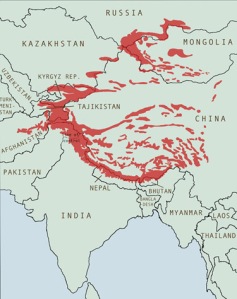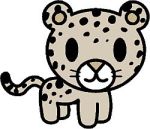
A former nomad is now trying to earn a living as a weaver in Ladakh, Indian Himalaya, as climate change impacts her traditional way of life. Photo by Nisa Khatoon, WWF.
With the Copenhagen conference late last year I posted a few stories on how climate change is affecting the Himalayas and in consequence the local people and the wildlife. Researchers recently found dramatic changes in Ladakh, northern India where nomads made their living for centuries herding goats, yak and sheep. They found that many herders have abandoned this way of life as huge fluctutaions in winter snowfall threatens livestock. If there is too much snow the animals can’t reach the fodder and die of starvation.
But in this desert mountain land where 80% of farmers and herders depend on snow melt for water it is the increasing years of too little snow which leads to drought and changes in pastures. It also means frequent locust swarms destroying crops and traditional grasses which are replaced by unplatable new grass that animals won’t eat.
“The grasses have started to die out due to less level of snowfall in the region. It has been a continuing phenomenon for a decade or so, and now it has become alarming,” said Nisa Khatoon, a researcher with the World Wildlife Fund based at Leh.

Ladakh is a part of the state of Jammu and Kashmir in northern India. The whole region is in the high Himalayas. The capital Leh is at 4000m. Ladakh's culture is based on Tibetan Buddhism and it is sometimes called "Little Tibet." Map from Wikipedia.
Today there are over 50 former nomad families in Leh, capital of Ladakh, trying to earn a living by newer means. “Some of them have set up small shops selling various items while most the women are working as daily wage labourers,” Khatoon said.
“Some of us have started tea shops and shops selling various items,” said Csawang Rigzin, who gave up his nomadic life three years ago. Now “we are not able to earn up to our expectation. We had high hopes when we came here but now we are shattered economically,” he said.
“Many of the nomads sold off their livestock and went to the town to seek a better place but now they feel they are nowhere economically,” said Rigzin Chondol of the Snow Leopard Conservancy, which is active in the area. “Earlier a nomad family used to earn a good amount of money, which often used to be 50,000 to 60,000 rupees ($1,100 to $1,300) a year but now they are not able to make savings.” Full story here.




 Posted by Sibylle and Rex
Posted by Sibylle and Rex 

















